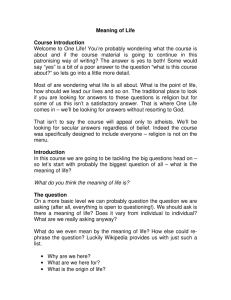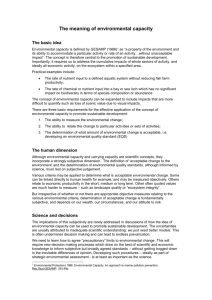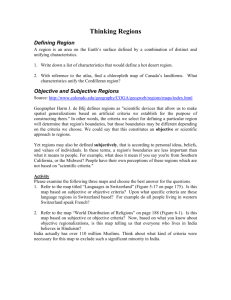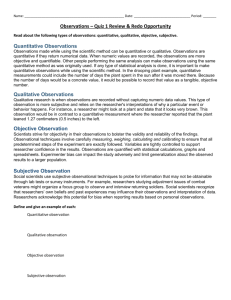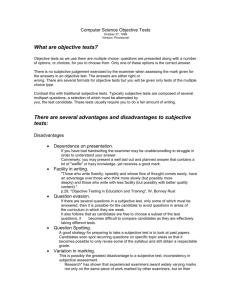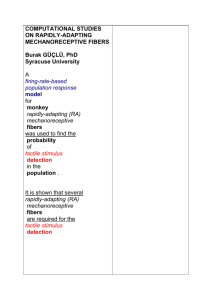Physical methods used in pain measurements: a review J A
advertisement
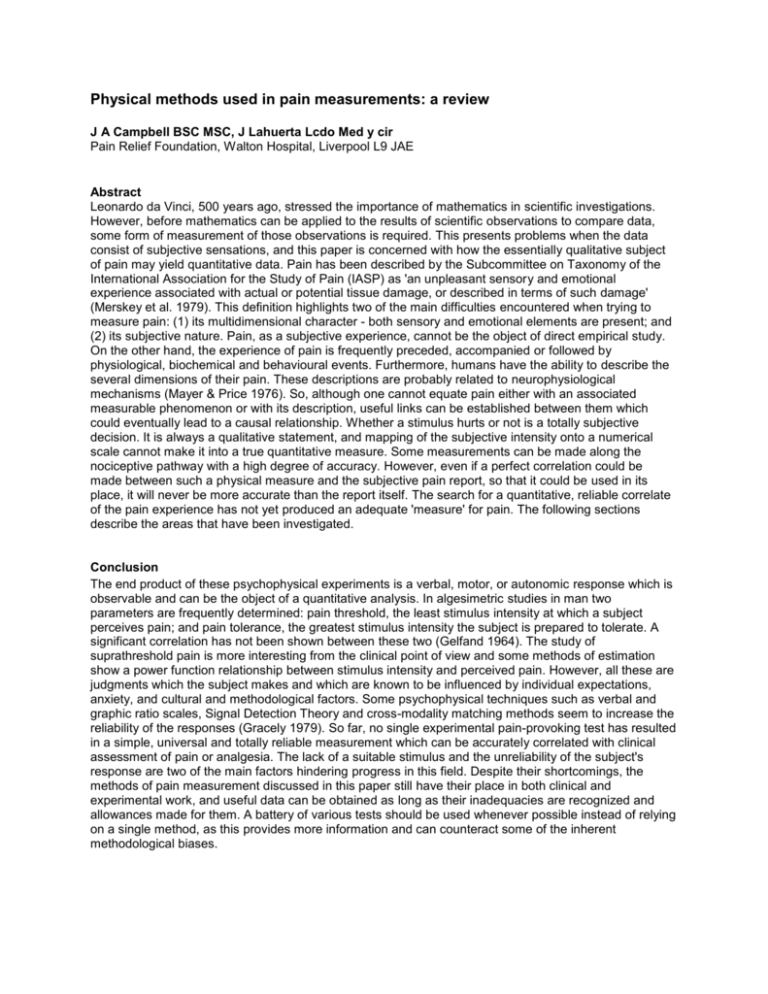
Physical methods used in pain measurements: a review J A Campbell BSC MSC, J Lahuerta Lcdo Med y cir Pain Relief Foundation, Walton Hospital, Liverpool L9 JAE Abstract Leonardo da Vinci, 500 years ago, stressed the importance of mathematics in scientific investigations. However, before mathematics can be applied to the results of scientific observations to compare data, some form of measurement of those observations is required. This presents problems when the data consist of subjective sensations, and this paper is concerned with how the essentially qualitative subject of pain may yield quantitative data. Pain has been described by the Subcommittee on Taxonomy of the International Association for the Study of Pain (IASP) as 'an unpleasant sensory and emotional experience associated with actual or potential tissue damage, or described in terms of such damage' (Merskey et al. 1979). This definition highlights two of the main difficulties encountered when trying to measure pain: (1) its multidimensional character - both sensory and emotional elements are present; and (2) its subjective nature. Pain, as a subjective experience, cannot be the object of direct empirical study. On the other hand, the experience of pain is frequently preceded, accompanied or followed by physiological, biochemical and behavioural events. Furthermore, humans have the ability to describe the several dimensions of their pain. These descriptions are probably related to neurophysiological mechanisms (Mayer & Price 1976). So, although one cannot equate pain either with an associated measurable phenomenon or with its description, useful links can be established between them which could eventually lead to a causal relationship. Whether a stimulus hurts or not is a totally subjective decision. It is always a qualitative statement, and mapping of the subjective intensity onto a numerical scale cannot make it into a true quantitative measure. Some measurements can be made along the nociceptive pathway with a high degree of accuracy. However, even if a perfect correlation could be made between such a physical measure and the subjective pain report, so that it could be used in its place, it will never be more accurate than the report itself. The search for a quantitative, reliable correlate of the pain experience has not yet produced an adequate 'measure' for pain. The following sections describe the areas that have been investigated. Conclusion The end product of these psychophysical experiments is a verbal, motor, or autonomic response which is observable and can be the object of a quantitative analysis. In algesimetric studies in man two parameters are frequently determined: pain threshold, the least stimulus intensity at which a subject perceives pain; and pain tolerance, the greatest stimulus intensity the subject is prepared to tolerate. A significant correlation has not been shown between these two (Gelfand 1964). The study of suprathreshold pain is more interesting from the clinical point of view and some methods of estimation show a power function relationship between stimulus intensity and perceived pain. However, all these are judgments which the subject makes and which are known to be influenced by individual expectations, anxiety, and cultural and methodological factors. Some psychophysical techniques such as verbal and graphic ratio scales, Signal Detection Theory and cross-modality matching methods seem to increase the reliability of the responses (Gracely 1979). So far, no single experimental pain-provoking test has resulted in a simple, universal and totally reliable measurement which can be accurately correlated with clinical assessment of pain or analgesia. The lack of a suitable stimulus and the unreliability of the subject's response are two of the main factors hindering progress in this field. Despite their shortcomings, the methods of pain measurement discussed in this paper still have their place in both clinical and experimental work, and useful data can be obtained as long as their inadequacies are recognized and allowances made for them. A battery of various tests should be used whenever possible instead of relying on a single method, as this provides more information and can counteract some of the inherent methodological biases.



